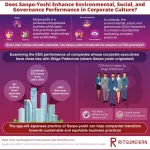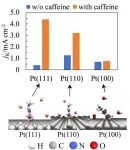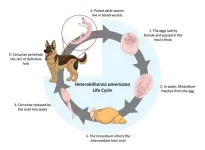(Press-News.org)
Viral infections trigger more cases of intussusception, the common cause of bowel blockages in young children, than previously thought, according to a new study.
The research, led by Murdoch Children’s Research Institute (MCRI) and published in Clinical Infectious Diseases, found during the COVID-19 lockdowns hospital admissions for intussusception, a medical emergency involving obstruction of the intestine, among young children significantly decreased.
For the study, 12 years of data was analysed across Victoria, NSW and Queensland. A total of 5,589 intussusception cases were recorded between January, 2010 and April, 2022. Of those, 3,179 were children under the age of two.
During the lockdown periods, Victoria and NSW experienced a decline in hospital admissions for intussusception among children under two by 62.7 per cent and 40.1 per cent, respectively. The rate of intussusception cases has now returned to normal levels.
MCRI and Monash University researcher Dr Ben Townley said the magnitude of the decline supported that common respiratory diseases such as colds, the flu and respiratory syncytial virus (RSV), were behind a significant proportion of intussusception cases.
“Reductions in intussusception hospital admissions were seen in all age groups, however most occurred in children less than two years of age,” he said.
“Intussusception is the leading cause of acute bowel obstruction in infants and young children and without prompt diagnosis and management, can be fatal.
“Countries with prolonged COVID-19 lockdowns and suppression strategies saw reductions in common respiratory viruses, which influenced the drop in intussusception admissions.”
Victoria experienced the greatest lockdown duration, with Melbourne having six lockdown periods, for a total of 263 days. Greater Sydney had 159 days and Brisbane had 18 days in lockdown.
MCRI Professor Jim Buttery said the decrease in intussusception cases was greater than expected given previous research into the causes of the condition.
“Our analysis found commons viruses play a larger role than previously recognised in triggering intussusception,” he said. Infectious triggers were thought to comprise only a minority, about 30 per cent, of cases.”
Professor Buttery said the findings raised the possibility that emerging vaccines like the new RSV vaccines may help prevent intussusception.
“When a new vaccine against common childhood respiratory viruses is introduced, we may find there are some unexpected benefits, like protecting more children from intussusception,” he said. We last saw this in 2007, when introducing the rotavirus vaccine against gastroenteritis, also reduced febrile convulsions in young children.”
Researchers from Sydney Children's Hospital Network, University of Melbourne and Queensland Health also contributed to the findings.
Publication: Benjamin Townley, Deniz Akin, Gerardo Luis Dimaguila, Rana Sawires, Gonzalo Sepulveda Kattan, Sebastian King, Julie E Bines, Nicholas Wood, Stephen Lambert and Jim Buttery. ‘Exploring the infectious contribution to intussusception causality using the effects of COVID-19 lockdowns in Australia: An ecological study,’ Clinical Infectious Diseases. DOI: 10.1093/cid/ciae084
*The content of this communication is the sole responsibility of MCRI and does not reflect the views of the NHMRC.
Available for interview:
Professor Jim Buttery, MCRI Group Leader, Health Informatics
END
Material scientists from the University of British Columbia Stewart Blusson Quantum Matter Institute (Blusson QMI) will lead the development of a multi-million world-class crystal growth facility thanks to $5.8 million in investments by the Canada Foundation for Innovation (CFI) and the B.C. Knowledge Development Fund (BCKDF) announced today.
Blusson QMI Scientific Director Andrea Damascelli said the investment will strengthen Canada’s position as a leader in quantum research and technology.
“The investment enables the establishment of state-of-the-art research infrastructure that is unique in Canada and will deliver exceptional impact for quantum material design, technology ...
‘Access to education’ is recognized as a fundamental human right and is listed as one of the United Nations’ sustainable development goals to achieve by 2030. Quality education unlocks opportunities and gives individuals the freedom to make livelihood choices and shape their own destinies. However, an increasing number of refugee children are deprived of this fundamental right. According to the UNHCR, between 2010 and 2022, the number of child refugees doubled from 20.6 million to about 43.3 million.
An overwhelming majority of these refugees are displaced to neighboring countries that are short on resources and lack adequate educational infrastructure ...
There is a growing emphasis for corporations to consider their impact on the environment, society, and its stakeholders. Broadly falling under environmental, social and governance or ESG, this involves practices such as using sustainably sourced materials, reducing carbon emissions, improving labor practices, fostering positive community relations, and promoting ethical corporate behavior, including efforts against anti-competitive practices and corruption.
The first mention of ESG appears in a 2004 UN report ...
With global goals set on transitioning away from fossil fuels, fuel cells stand out as a promising carbon-free energy source. Comprising an anode and a cathode separated by an electrolyte, fuel cells convert the chemical energy of fuel directly into electricity. The anode receives the fuel, while an oxidant, typically oxygen from the air, is introduced at the cathode. In a hydrogen fuel cell, hydrogen undergoes oxidation at the anode, producing hydrogen ions and electrons. The ions move through the electrolyte to the cathode, and electrons flow through an external circuit, generating electricity. At the cathode, oxygen combines with the hydrogen ions ...
DURHAM, NC – Living in a poorer neighborhood is linked to accelerated brain aging and increased dementia risk early in life, regardless of income level or education, a Duke University-led study finds.
The study, which appears March 14 in Alzheimer's & Dementia: The Journal of the Alzheimer's Association, suggests that targeting disadvantaged neighborhoods for dementia prevention programs and encouraging clinicians to consider a patient’s address could help lower dementia risk.
“If you want to prevent dementia, and you’re not asking someone ...
UC Riverside scientists confirm, for the first time, that a potentially fatal dog parasite is present in a portion of the Colorado River that runs through California.
The parasite, Heterobilharzia americana, is a flatworm commonly referred to as liver fluke. Previously found almost exclusively in Texas and other Gulf Coast states, it has never been reported this far west. The worm can cause canine schistosomiasis, an illness that impacts the liver and intestines of dogs.
“Dogs can die from this infection, so we are hoping ...
With animal-free dairy products and convincing vegetarian meat substitutes already on the market, it’s easy to see how biotechnology can change the food industry. Advances in genetic engineering are allowing us to harness microorganisms to produce cruelty-free products that are healthy for consumers and healthier for the environment.
One of the most promising sources of innovative foods is fungi – a diverse kingdom of organisms that naturally produce a huge range of tasty and nutritious ...
In a worldwide first-of-its-kind study published in the prestigious journal Nature Communications this week, a team of scientists from Children’s Medical Research Institute (CMRI) tested novel gene therapies in a whole human liver, with the goal of developing more effective treatments for life-threatening inherited diseases.
Gene therapy is a revolutionary approach to treating serious genetic diseases that most commonly involves replacing or repairing a faulty gene. The most efficient delivery systems today are those based on a harmless virus named adeno-associated ...
Researchers at the Francis Crick Institute have shed light on how cancer cells survive in the first few hours after being cut off from a supply of oxygen.
Published today in The EMBO Journal, this finding could one day help to prevent cancer from becoming resistant to therapy.
A major use of oxygen by cells is for energy production. When oxygen supplies are low, most cells can survive because they adapt, by changing which proteins they make, to produce energy through different processes than in normal oxygen levels. This is coordinated by a protein called HIF1α, which turns on the activity of genes.
Although HIF1α ...
Research Highlights:
In a review of data for more than 90,000 veterans hospitalized with stroke, African American veterans who had been previously diagnosed with post-traumatic stress disorder (PTSD) were significantly more likely to be re-hospitalized than African American veterans without PTSD.
In contrast, white veterans with PTSD were not significantly more likely to be re-hospitalized after stroke than white veterans without PTSD.
Illicit drug use and Type 2 diabetes also raised the hospital readmission risk in African American veterans ...





